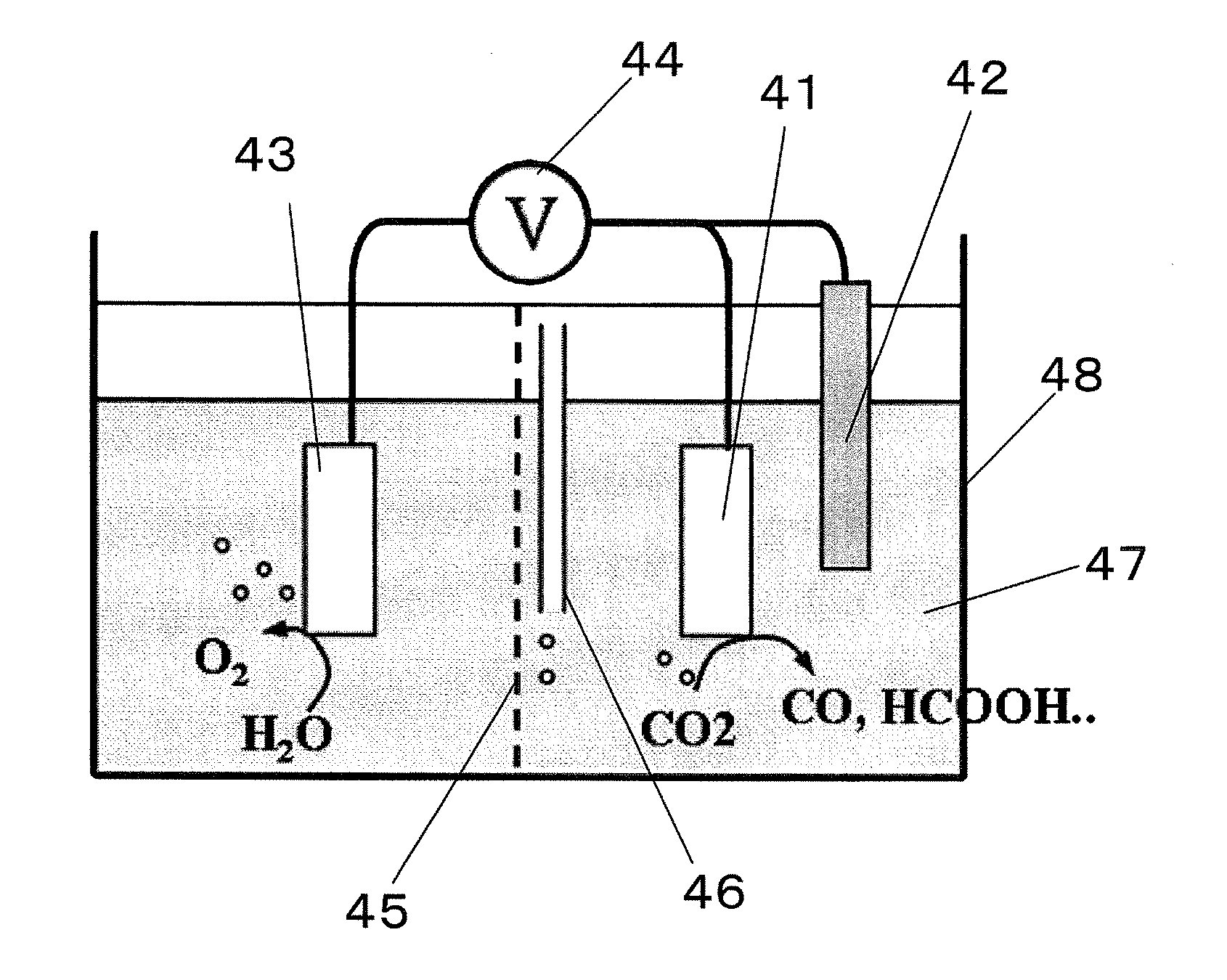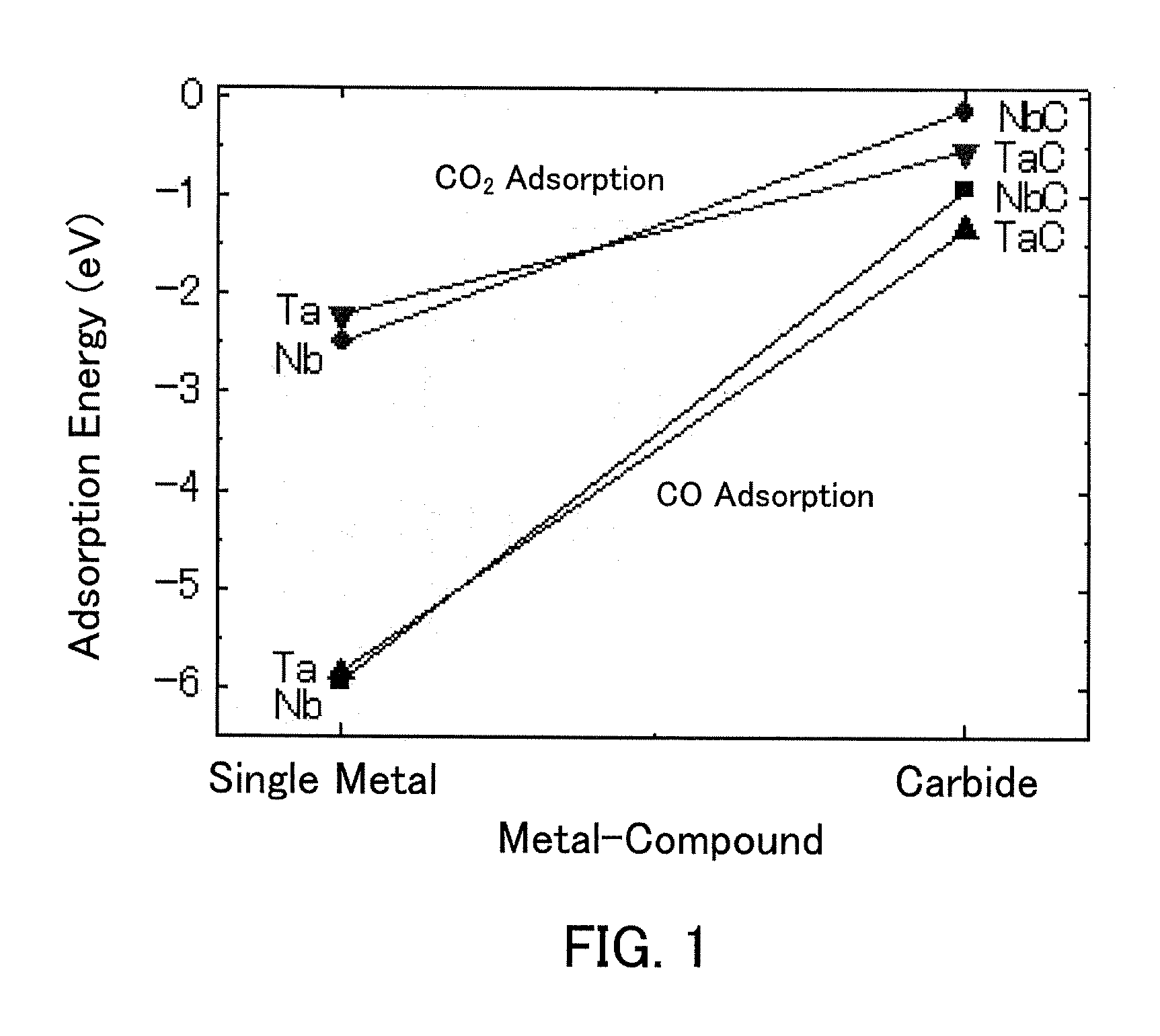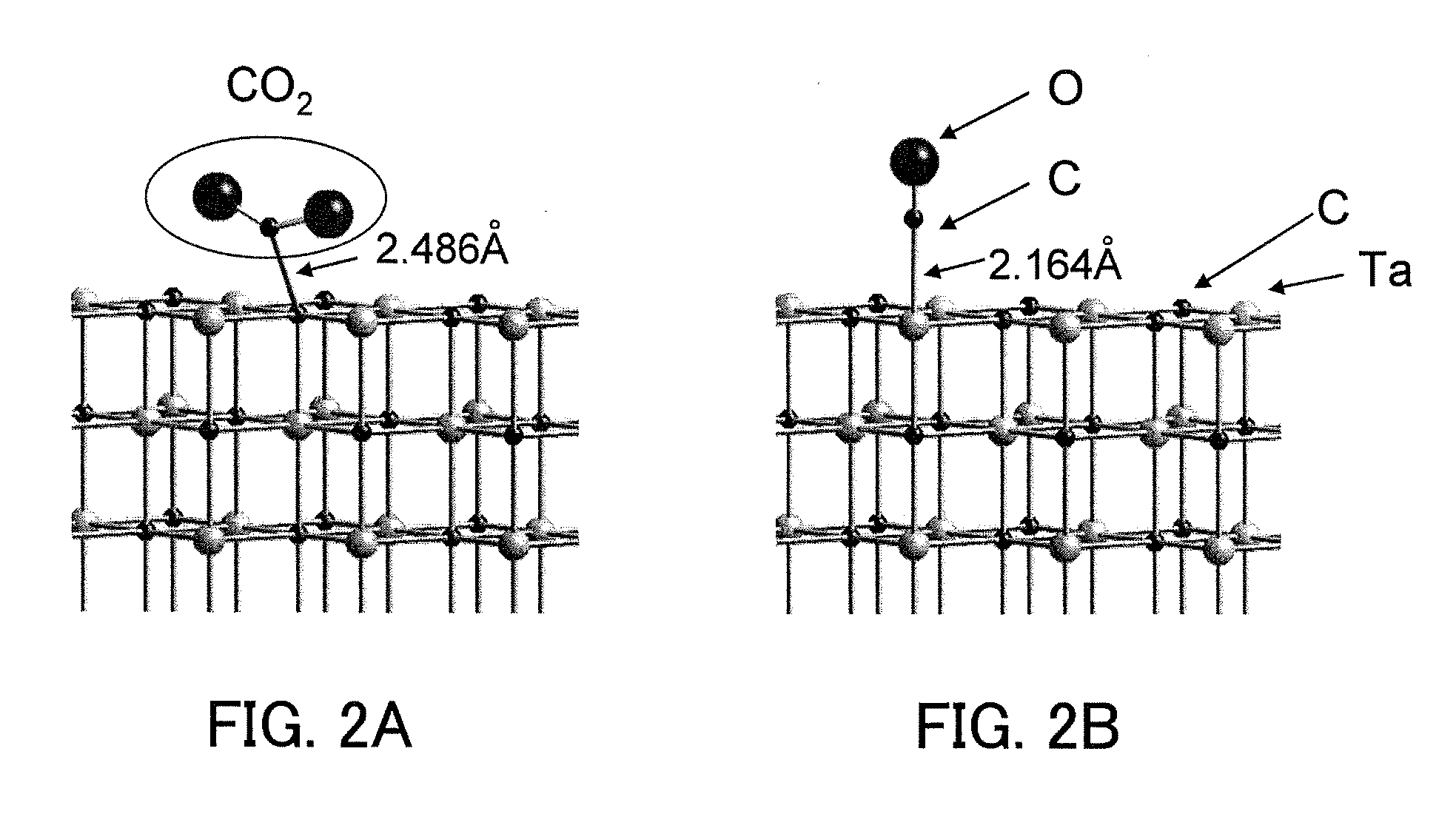Carbon dioxide reduction method, and carbon dioxide reduction catalyst and carbon dioxide reduction device used for the method
a carbon dioxide and catalyst technology, applied in the direction of electrolytic organic production, physical/chemical process catalysts, electrode coatings, etc., can solve the problems of large-scale equipment, high overvoltage, and reaction not proceeding smoothly, so as to reduce carbon dioxide and reduce carbon dioxide. , the effect of high durability
- Summary
- Abstract
- Description
- Claims
- Application Information
AI Technical Summary
Benefits of technology
Problems solved by technology
Method used
Image
Examples
example 1
[0043]First, as an electrode substrate, a 1 cm square conductive silicon substrate was prepared. A chamber was pumped down to a vacuum of 1.0×10−4 Pa, and then argon gas was introduced into the chamber. A thin film of tantalum carbide was deposited at a thickness of about 3000 Å on the electrode substrate by sputtering at a power of 100 W in an argon gas atmosphere of 1.0×10−1 Pa. The crystalline structure of tantalum carbide was evaluated by X-ray diffraction. FIG. 3 shows the X-ray diffraction pattern of tantalum carbide. As shown with arrows in the diffraction pattern of FIG. 3, peaks corresponding to the crystalline structure of tantalum carbide having a sodium chloride structure were observed.
[0044]This result of the X-ray diffraction confirmed that a crystalline thin film of tantalum carbide was deposited on the silicon substrate (electrode substrate), although tantalum carbide thus deposited was in a polycrystalline state having different plane indices.
[0045]FIG. 4 shows a sc...
PUM
| Property | Measurement | Unit |
|---|---|---|
| pressure | aaaaa | aaaaa |
| overvoltage | aaaaa | aaaaa |
| durability | aaaaa | aaaaa |
Abstract
Description
Claims
Application Information
 Login to View More
Login to View More - R&D
- Intellectual Property
- Life Sciences
- Materials
- Tech Scout
- Unparalleled Data Quality
- Higher Quality Content
- 60% Fewer Hallucinations
Browse by: Latest US Patents, China's latest patents, Technical Efficacy Thesaurus, Application Domain, Technology Topic, Popular Technical Reports.
© 2025 PatSnap. All rights reserved.Legal|Privacy policy|Modern Slavery Act Transparency Statement|Sitemap|About US| Contact US: help@patsnap.com



